Facelift
As we age, various changes in our skin and underlying soft tissues occur. The skin loses collagen and its elasticity, and the fat beneath the skin atrophies and disappears. As these processes occur, the face appears more hollowed and the skin begins to sag. The once well-defined facial contours are hidden, making us look older. Additionally, the jowls and neck skin become more prominent and horizontal and vertical bands develop in the neck. A facelift corrects all of these issues. There are many types of facelifts depending on the patient’s age, motivations, skin type, and degree of skin laxity. These range from minimally invasive to more extensive procedures.
Facelift video: Dr. Deidra Blanks
Procedure
Strictly speaking, a facelift refers to a tightening of the skin and soft tissues from the cheek bones to the collar bones. Therefore, your cheeks, jowl line, and neck are all improved by this procedure. This procedure can be broken up into either a cheek lift or a neck lift if only one of these areas is in need of surgery.
The incision is tailored to the patient but is placed in natural creases in front of and behind the ear to make it unnoticeable. For males and females the incision is slightly different so as to not distort the hair bearing skin of the face in males. In order to address the neck muscles, fat, and skin, a small horizontal incision is placed beneath the chin in a natural crease where it cannot be seen. The skin and underlying soft tissue structures are elevated to provide for longer-lasting, more natural appearing results.
These tissues are then re-draped and the redundant tissue is removed. This is done in a way to restore the natural youthful appearance and to avoid a surgical appearance. The best results in a facelift, occur when the patient has a well-defined bony structure and excellent skin quality. Therefore, Dr. Blanks may recommend additional procedures such as facial resurfacing, liposuction, fat augmentation, or chin augmentation to guarantee the best results.
The length of the procedure can vary from 2-5 hrs, depending on the exact facelift procedure and additional complementary procedures. It can be performed under conscious sedation or general anesthesia. Together with Dr. Blanks, the appropriate anesthetic plan will be determined.
Recovery
The patient should be able to return to work within 10-14 days. At the end of the procedure, the incisions are wrapped in an occlusive dressing to minimize swelling and promote wound healing. This dressing is removed the day after the procedure.
Some swelling and bruising is expected and normal. After the dressing is removed, you will be instructed on how to clean and care for the wound. Sleeping with your head elevated will minimize the swelling and expedite the recovery. Sutures are removed in 7-10 days.
Before and After
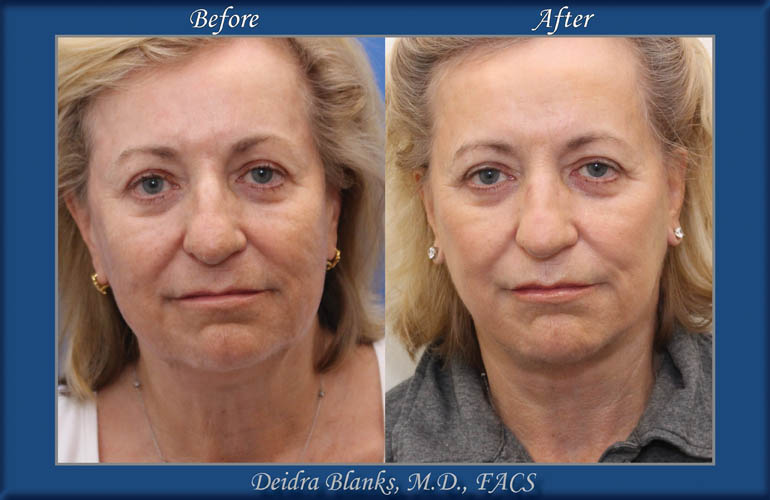
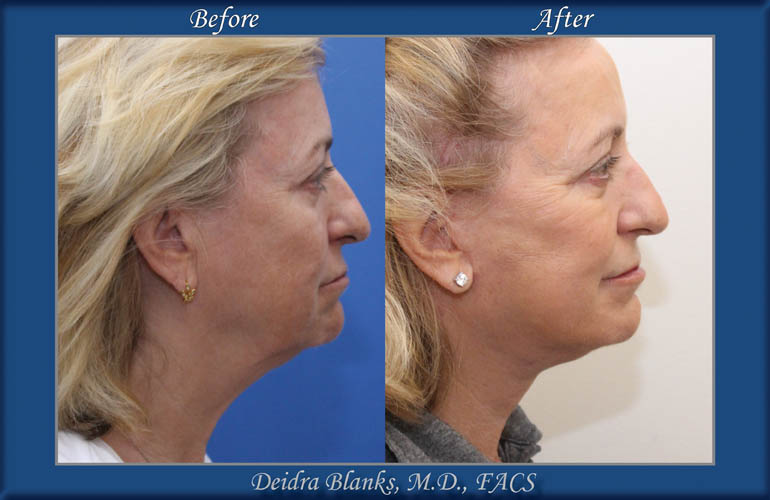
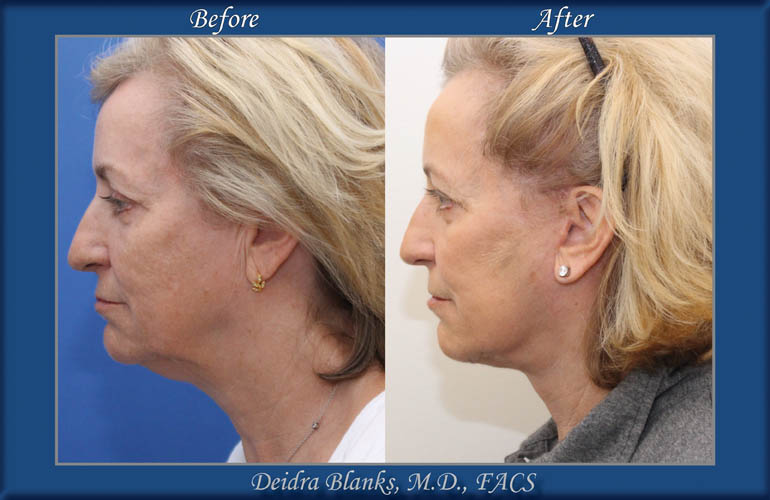
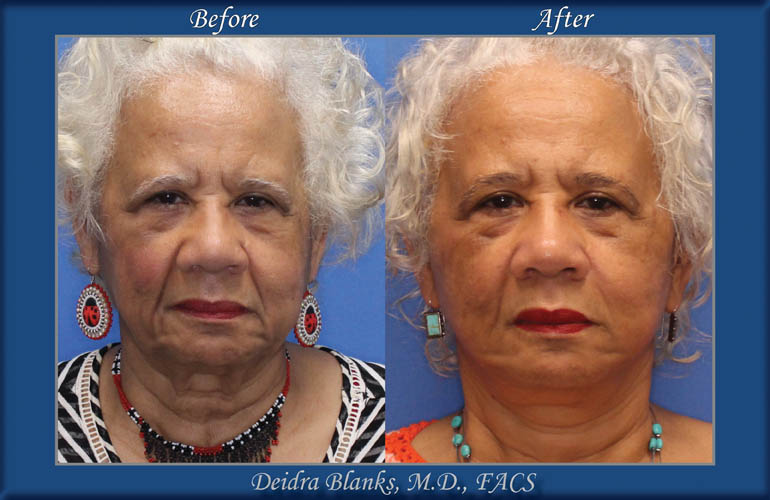
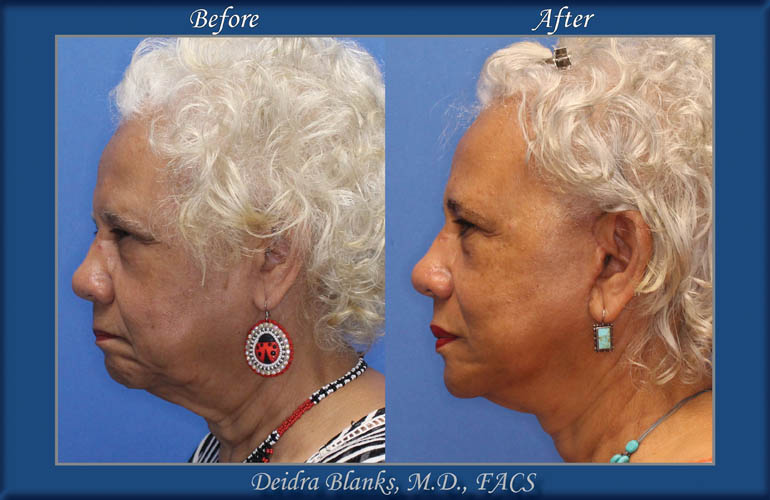
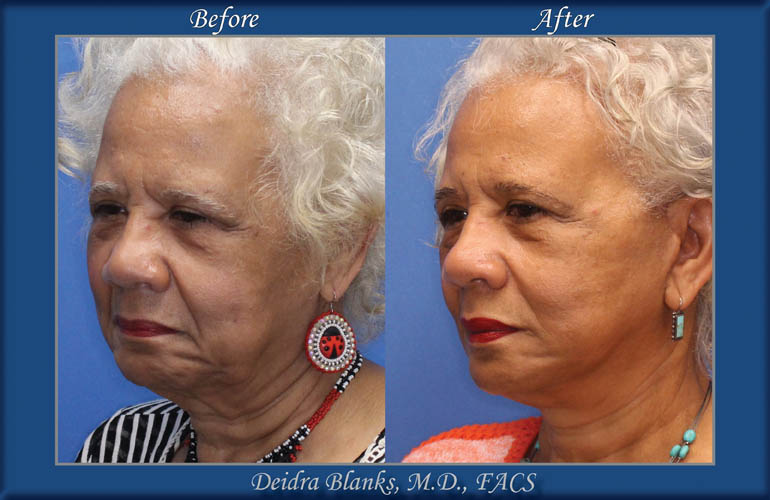
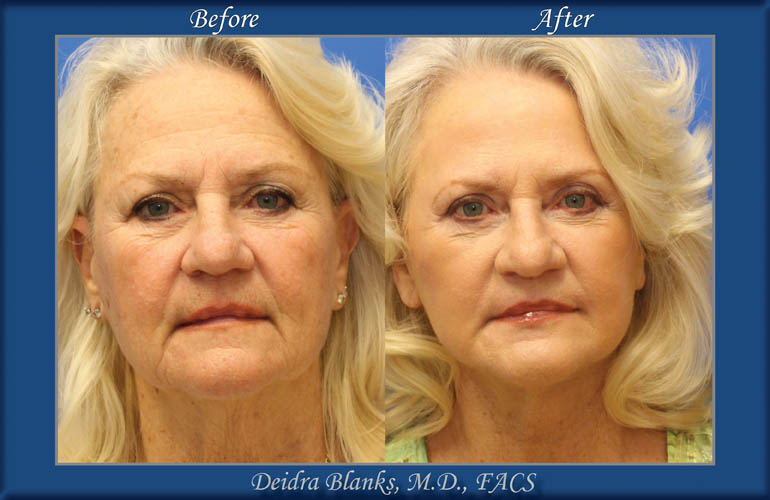
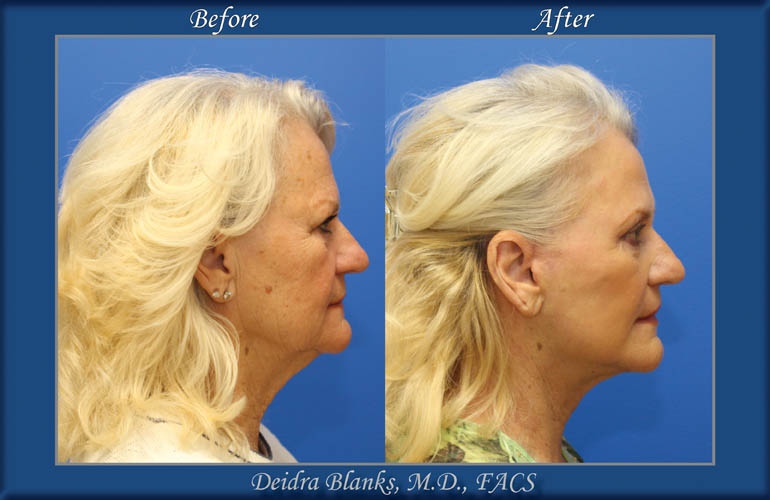
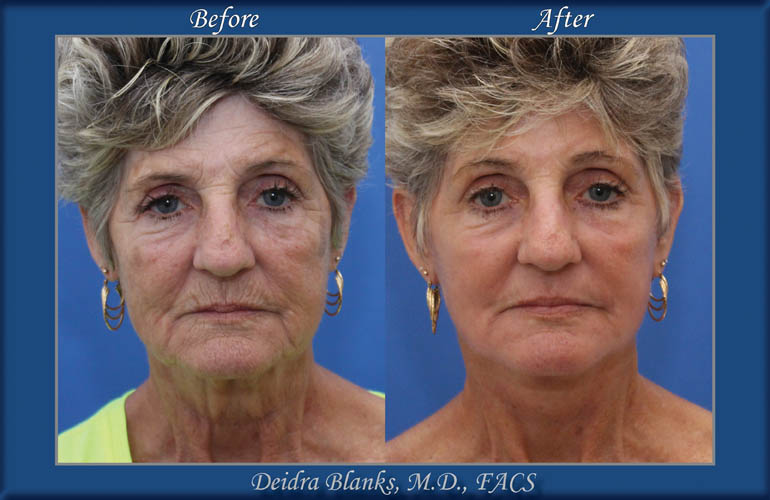
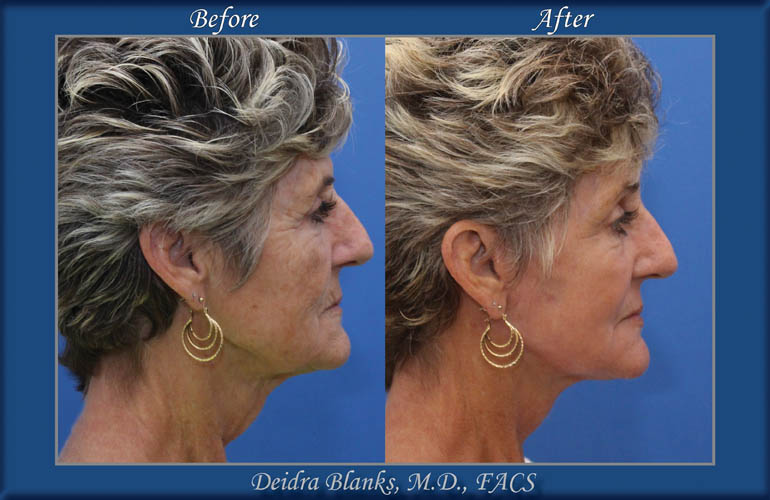


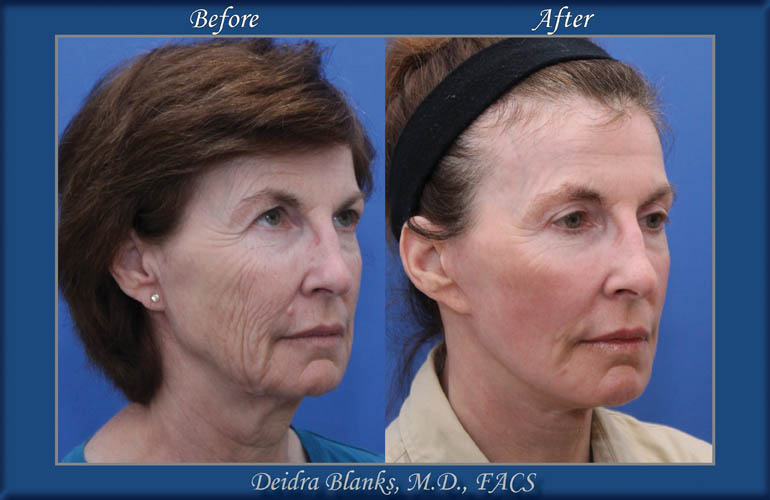
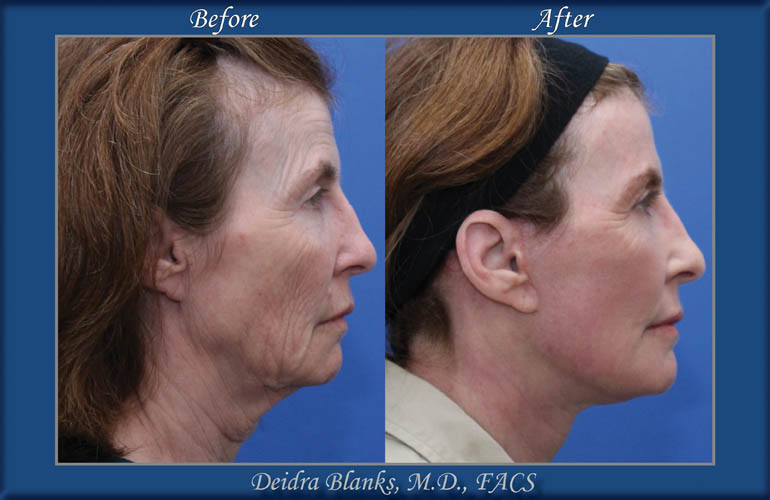
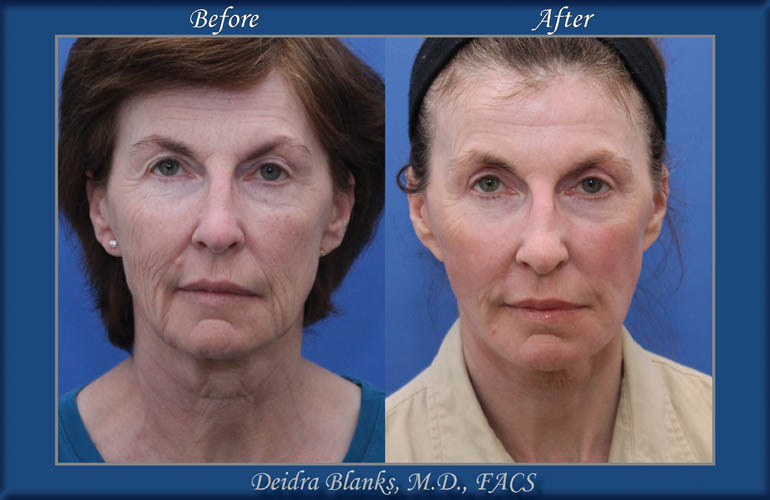
 / 103 Reviews
/ 103 Reviews